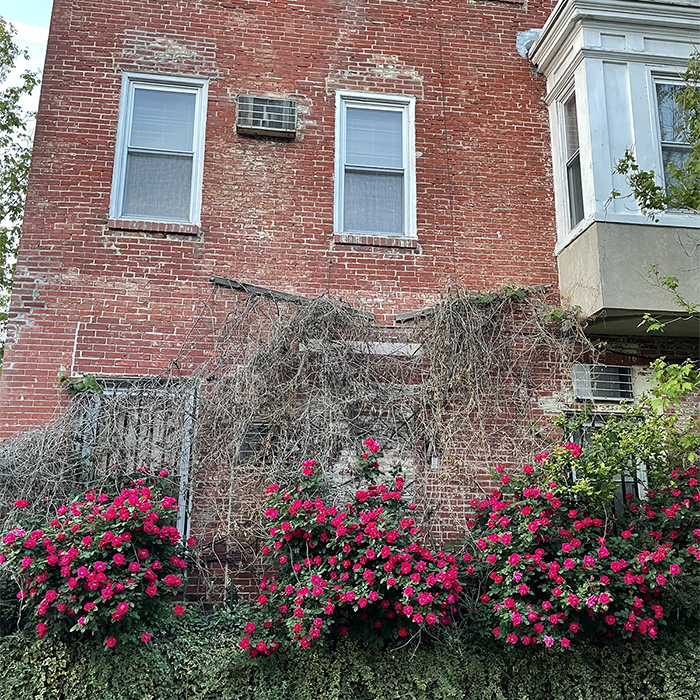Partnerships for Environmental Public Health (PEPH)

Protecting Communities From Lead Exposure
October 02, 2023
Interviewee: Marilyn Howarth, M.D.
In this episode we talk with Marilyn Howarth, M.D., who works with community partners to better understand the factors associated with lead exposure across Philadelphia. As part of a community project, she and the team created a map that combines socioeconomic, demographic, and soil lead data to show exposure risk across Philadelphia neighborhoods. Howarth discusses how the map can help decision makers identify and prioritize neighborhoods for cleanup and offers tips to reduce lead exposure.
Protecting Communities From Lead Exposure
Despite progress in reducing lead exposure in the U.S., lead-contaminated soil continues to be a health risk for children. There is no safe level of lead exposure; even at low levels, lead can harm a child’s development and behavior. Children living in urban areas or near homes built before 1978, when lead paint was banned in the U.S., are at an increased risk of lead exposure. Minority and low-income communities are also disproportionately affected, with lead levels in these communities often exceeding federal safety guidelines. A better understanding of the factors associated with disparities in lead exposure can help decision makers identify and prioritize cleanup in high-risk areas.
In this episode we talk with Marilyn Howarth, M.D., who works with community partners to better understand the factors associated with lead exposure risk across Philadelphia. As part of a community science project, she and the team created a map that combines socioeconomic, demographic, and soil lead data to show exposure risk across Philadelphia neighborhoods. Howarth discusses the map can help decision makers identify and prioritize neighborhoods for cleanup and offers tips to reduce lead exposure.
Interviewee:

Marilyn Howarth, M.D., directs the Community Engagement Core within the University of Pennsylvania’s NIEHS-funded Center of Excellence in Environmental Toxicology (CEET). She also directs the Philadelphia Regional Center for Children's Environmental Health and serves as an adjunct associate professor of pharmacology at the University of Pennsylvania. She works with researchers, regulators, legislators, and communities to reduce environmental exposures and improve health. Dr. Howarth’s research focuses on reducing environmental health disparities. She has worked with communities in the Philadelphia region to address problems including lead exposure, climate change, hydraulic fracturing exposures, air pollution, asthma, water quality, and flooding.
Resources:
- Learn more about lead and health from NIEHS.
- Learn more about preventing children’s lead exposure from the U.S. Centers for Disease Control and Prevention.
- Visit the Lead Index and Mapping Project webpage, created by the University of Pennsylvania’s Center of Excellence in Environmental Toxicology.
References:
O'Shea MJ, Toupal J, Caballero-Gómez H, McKeon TP, Howarth MV, Pepino R, Gieré R. Lead Pollution, Demographics, and Environmental Health Risks: The Case of Philadelphia, USA. Int J Environ Res Public Health. 2021 Aug 27;18(17):9055. doi: 10.3390/ijerph18179055. PMID: 34501644; PMCID: PMC8431549. [Abstract O'Shea MJ, Toupal J, Caballero-Gómez H, McKeon TP, Howarth MV, Pepino R, Gieré R. Lead Pollution, Demographics, and Environmental Health Risks: The Case of Philadelphia, USA. Int J Environ Res Public Health. 2021 Aug 27;18(17):9055. doi: 10.3390/ijerph18179055. PMID: 34501644; PMCID: PMC8431549.] [Full Text O'Shea MJ, Toupal J, Caballero-Gómez H, McKeon TP, Howarth MV, Pepino R, Gieré R. Lead Pollution, Demographics, and Environmental Health Risks: The Case of Philadelphia, USA. Int J Environ Res Public Health. 2021 Aug 27;18(17):9055. doi: 10.3390/ijerph18179055. PMID: 34501644; PMCID: PMC8431549.]


